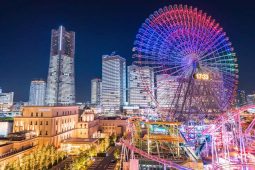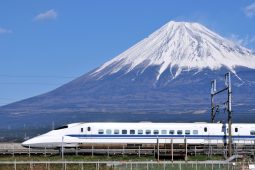Japanese manufacturers active in the escalator marketJp>
In a previous article on elevator technology I introduced the three Japanese companies behind the top 3 fastest elevators in the world Hitachi Building Systems, Mitsubishi Electric, and Toshiba Elevator and Building Systems.
Actually, Japanese manufacturers are also active in the escalator market. That’s why, on this occasion, we will look at some of the unusual escalators you can see in Japan together with some outstanding escalator technology developed in Japan.
The only company in the world that can make curved escalators
When we speak of escalators, the image that springs to mind is of steps lined up straight like a staircase. However, if we look around the world, there are around 100 arc-shaped escalators in operation. These are the Spiral Escalators developed by Mitsubishi, and Mitsubishi is the only company in the world that can make these escalators
Unlike regular escalators, the steps are not rectangular, but resemble parts of a ring that has been chopped up, together forming a fan-like shape. Naturally, the length of the chains that move the steps also differs on the inside and outside. The overall form is not that of a simple circle, but a complex shape combining three arcs with separate centers. Apparently, the tracks that support the steps require technicians skilled in manufacturing know-how, who work to bend the parts by hand one-by-one as if they are making handicrafts.
These Spiral Escalators can be found at such locations as Forum Shops in Caesars Palace Las Vegas, Shanghai New World Daimaru, The Venetian Macau Resort Hotel, and Lotte World. In Japan too, they are used in the Landmark Plaza shopping mall which is attached to Yokohama’s Landmark Tower, the international exhibition center Intex Osaka in Osaka, and Fukuoka’s IMS commercial complex.
Riding a spiral staircase as it moves in a large arc is a wonderful experience quite different from a straight escalator. If you ever have the opportunity, do give it a try.
A high-speed escalator that you can step on and off safely
Escalators that can run smoothly up and down when you stand on the steps also need to ensure your safety when you step on and off. This makes them difficult to operate at high speeds. Increasing the speed also increases the risk of dangerous tumbles. Ideally one could have a slower speed when boarding and disembarking, and faster speeds in between, but when one considers the structure of linked steps this seems impossible.
Nevertheless, Mitsubishi have devised a variable-speed escalator that only runs fast in the middle section and they have filed a patent application for it. The company calls it the “inclined part high-speed escalator” ( https://www.giho.mitsubishielectric.co.jp/giho/pdf/2003/0310109.pdf) and have even made a working model. However, even if you would like to take a ride, there does not seem to be any place where it has been introduced just yet.
Although you cannot experience an escalator that changes its speed midway, IHI Corporation have commercialized a variable-speed moving walkway called the Accel-Liner. It is used in facilities that require long-distance transfers, such as Haneda Airport in Tokyo.
Not only that, but IHI is the only manufacturer in the world able to make a curved moving walkway. This is the rubber belt moving walkway that connects the 1st and 3rd floors of the Matsumoto Performing Arts Centre in Nagano Prefecture. The total length is 45 m, and the curvature of the walkway has a radius of 83 m.
The world’s longest escalator isn’t in Japan, but…
Like the elevators, it occurred to me that the world’s longest escalator might be in Japan. On investigation though, my conjecture was sadly proved wrong. On the other hand the world’s shortest escalator can be ridden in Japan.
Not far from Kawasaki Station is the Petit Escalator at Kawasaki More’s commercial facility. This is the shortest escalator in the world with a height of 83.4 cm and only five steps — and it was installed by Hitachi.








